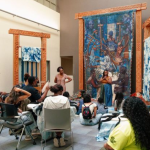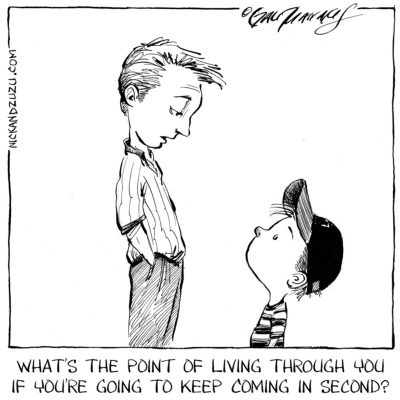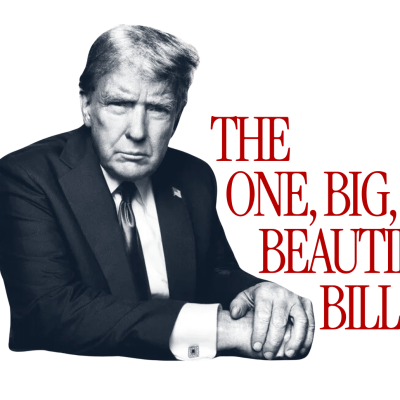Social Media is a facade: Do you know what you’re watching?
Social media content can range from lighting fireworks inside a building, inviting alleged sex traffickers onto your platform, or spending twenty-four hours in a hot tub. The internet is a wild place. But out of the hundreds of clips you see when scrolling through social media or watching a YouTube video, do you ever wonder how much of what you see is real? How many creators are doing it just for clicks? Content creation has become an oversaturated field, and while some may think they need to do whatever to make it to the top, as social media grows, creators are trading authenticity for virality, which is taking a toll on the social media community as a whole.
When people hear the term “content creation,” they usually think of entertainment streamers like Kai Cenat or YouTubers like MrBeast. However, in today’s age, content creation is a lot different from what it used to be. Content could be a few hit tweets on X, an Instagram reel, a TikTok, or a vlog. The types of content are continuing to expand, as is the number of users across all social media platforms. According to Statista, there are approximately 5.4 billion social media users across apps like Facebook, TikTok, YouTube, etc. With that many users, it’s no surprise that both content production and consumption have skyrocketed, leading to a surge of creators all competing for attention in an increasingly competitive field. You’ve probably seen the same recycled tweet 50 times, countless 3 AM challenges throughout YouTube videos, or the same phrase being said across every video on your “For You” page on TikTok. Are people lacking originality? Or is it just harder to get views?
Well, yes, and no. People aren’t lacking originality; however, original content is harder to get out there. This is where social media algorithms come in. According to UAB, “Social media algorithms do more than personalize; they predict. Platforms track every click, scroll, share, message, video view, and even how long users hover over a post.” They gather contextual data such as time of day, location, language and connected apps.” Everyone is aware of how the algorithm works, which is why recycled content is being exploited. If something is already popular and favored by social media algorithms, why not just make the same content for a similar audience that hasn’t seen the original?
Originality can easily be spotted in editing. It’s the creators who put their blood and soul into making content, receive the response of people who appreciate their content, who are genuine in delivery, and who teach and give back to their audience. I think the best example of this is TikTok editors. Editors are a staple of the TikTok community. There are good, authentic editors, whose edits take days to months to make, and put a ton of effort into their edits like Felix.aep. To them, creating edits is a hobby, something they genuinely enjoy; in turn, they make engaging content. They even post tutorials to help others grow as well, like Peej_Ent, for example. However, just as there are good, authentic editors, there are also editors who make low-effort edits to grow their accounts.
Unoriginal editors are creators who spend at most a day on what they create; they recycle ideas with no innovation and steal from others. Around Saltburn’s release back in 2023-2024, a very popular edit, originally created by kcsvids on TikTok, was stolen by a creator named oorz, whose “remake” gained the title of “The Jacob Elordi edit.” The edit got around 10 million likes compared to the original’s 1 million likes at the time. This was a perfect example of a creator exploiting the algorithm, remaking something already popular and getting favored.
This is how authentic content gets drowned. When algorithms reward repetition and creators chase easy engagement, true originality gets buried beneath layers of the same repetitive posts and premises. If algorithms are simply reflecting what audiences engage with most, maybe the problem isn’t just creators or platforms, but us, the audience. Are we choosing viral, repetitive content over originality?
We’re the ones clicking. Watching. Sharing. Following. Supporting the same recycled content over and over again. This ties directly into the rise of influencers, arguably the most visible byproduct of social media’s rapid evolution. By definition, influencers are people who hold the power to affect the decisions of others due to their popularity, knowledge, or connection with their audience. Everyone knows at least one.
And they aren’t called influencers for nothing. Society knows it. Brands know it. According to Forbes, 74% of consumers have bought a product because an influencer recommended it. Influencers hold a lot of power when it comes to shaping how content is seen on social media platforms. They’re marketable. Audiences boost these people up, launch their careers, get them sitting next to A-list celebrities, at red carpet events, and let them influence their everyday lives. But there have been plenty of times when these people aren’t good either. People like Miranda Cosgrove, Andrew Tate, Shane Dawson, etc.
So, the next time you follow a creator on TikTok, X, YouTube, etc, be aware of who you’re watching. What type of people are they? Look out for originality, be sure that the person you’re supporting is someone you want to support, because there is a lot of power weilded through a simple like on a post. And if you want to create content, don’t diminish your personality in hopes that you become likeable for a general audience, don’t do outlandish things that go against your morals to go viral, don’t steal, and stay true to yourself. Make content that you enjoy and that showcases who you are. The internet is not always a nice place, but don’t let that destroy your pride.










